Prelude: updates to my previous talks
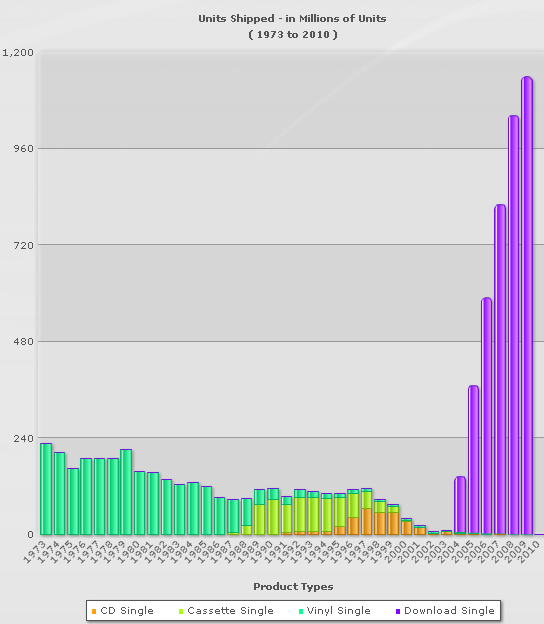
Steven Pemberton, CWI, Amsterdam
Despite what some announcements for this talk said, this is my fifth annual address to this august institution.
2008: Why you should have a website (on Web 2.0 and semantic markup)
I introduced RDFa as a new technology: Now adopted by Yahoo, Google, US and UK governments, Drupal, Facebook, Newsweek, just to name a few. Bestbuy in the US reports that it improved their Google rank tremendously, gave a 30% increase in traffic, and a 15% increase in click-throughs.
Last time it was measured, nearly 4% of websites used RDFa "fastest growing format on the web".
2009: Never is a long time
Linux: I quoted some optimist saying "Linux will outship Windows on new PCs in 2009". That was before Microsoft created Windows 7 Starter, but Android is of course just a version of Linux.
Solid state disk prices: the price dropped just below €1 per gigabyte last year for the first time.
Music: Last year was the first year that digital music outsold physical music (i.e. CDs), but most downloads are still of single tracks, not of albums.


2010: The Ten Euro Computer. "Google OS is coming: return of the thin client."

The ten euro computer.
Rasperry Pi £15 computer (coming this month), credit card size, 17mm thick:

Also of interest: FXI Cotton Candy

Sapir-Whorf Hypothesis: Connection between thought and language.
If you haven't got a word for it, you won't think about it.
If you don't perceive it as a concept, you won't invent a word for it.
For example:
The Deeper Meaning of Liff: A Dictionary of Things There Aren't Any Words for Yet — But There Ought to Be
By Douglas Adams and John Lloyd
Such as:
The Deeper Meaning of Liff: A Dictionary of Things There Aren't Any Words for Yet — But There Ought to Be
By Douglas Adams and John Lloyd
Such as:
PEORIA (n.): the fear of peeling too few potatoes
The Deeper Meaning of Liff: A Dictionary of Things There Aren't Any Words for Yet — But There Ought to Be
By Douglas Adams and John Lloyd
Such as:
PEORIA (n.): the fear of peeling too few potatoes
ABINGER (n.): Person who washes up everything except the frying pan, the cheese grater and the saucepan which the chocolate sauce has been made in.
The Deeper Meaning of Liff: A Dictionary of Things There Aren't Any Words for Yet — But There Ought to Be
By Douglas Adams and John Lloyd
Such as:
PEORIA (n.): the fear of peeling too few potatoes
ABINGER (n.): Person who washes up everything except the frying pan, the cheese grater and the saucepan which the chocolate sauce has been made in.
DUNGENESS (n.): The uneasy feeling that the plastic handles of the over-loaded supermarket carrier bag you are carrying are getting steadily longer.
As science reveals new facts, it is interesting to observe if language changes to match the new reality, if objective reality becomes subjective reality:
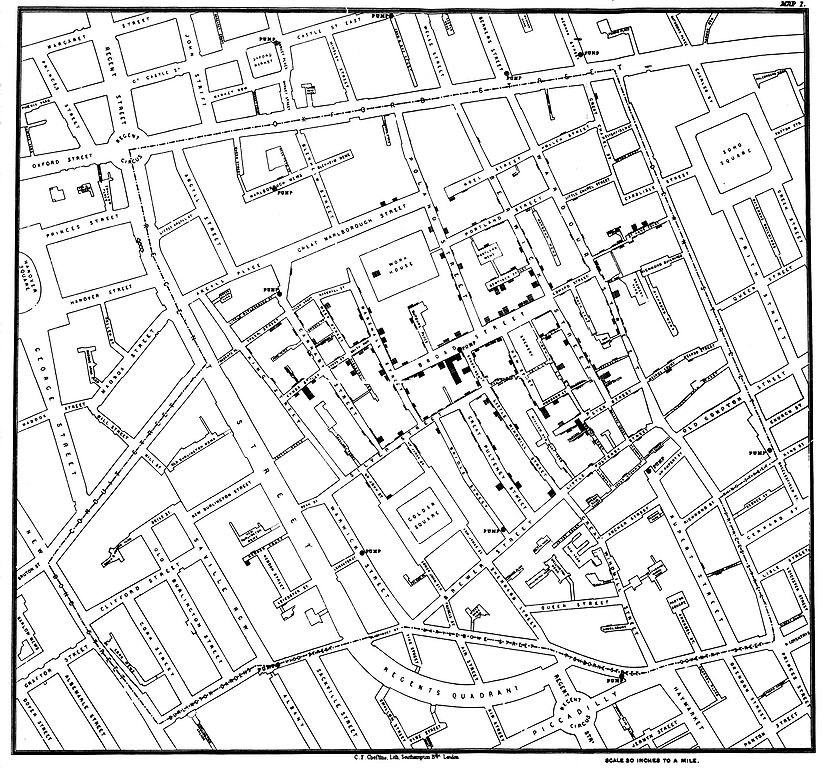
Well known map (1854)
People used to think that all disease came from bad vapours in the air.
This outbreak introduced the notion of microbes/bacteria
By 1911 people were saying "She's got a bug" rather than "she's got the vapours"
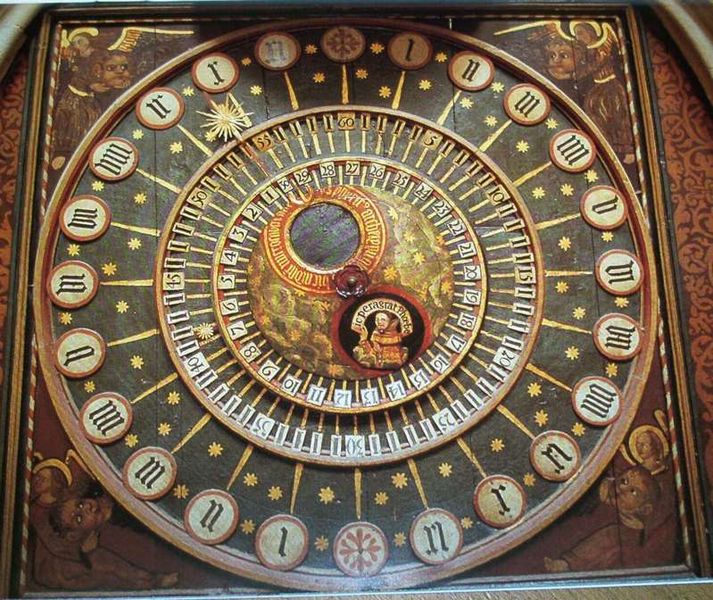 The Sun revolves around the earth: it's obvious...
The Sun revolves around the earth: it's obvious...
Apparently this was such an important fact that to suggest it wasn't true could involve some nasty punishments (and apparently around 20% of several nations still think it is true).
It is still reflected in our language use: the Sun rises and sets, we don't turn towards the sun.
Onan didn't spill any seed: people used to think that a man would plant seeds in a woman, which would then grow to a human. But it is not so.
If we want to use the correct plant analogy, a woman's egg is a seed, and the man's contribution is pollen.
So taking something like the Sun, there is an objective reality that the Earth spins on its axis, and revolves round around the Sun, but there is the subjective reality that the Sun revolves around the Earth.
While we are talking about reality, and the solar system, let me just briefly reflect on the moon.
The train driver had brought the little red train back to
the station in the evening.
And I thought "There's something wrong here".
Can you see it?
 You see, the sun and the moon follow roughly the same
trajectory through the sky: they rise in the east, peak in the south, and set
in the west. (This is all for the Northern Hemisphere).
You see, the sun and the moon follow roughly the same
trajectory through the sky: they rise in the east, peak in the south, and set
in the west. (This is all for the Northern Hemisphere).
The moon is always "pointing" at the sun.
If the moon has a ☽ ) shape, it must be evening.
If it has a ( ☾ shape, it must be morning.
(Yes, there are Unicode characters for the moon).
But back to the topic at hand: colour. My point being that there are subjective colours and objective colours.
It is a more complicated topic than you might expect. I shall split it up into three areas:
Light is just vibrations
 There is nothing inherent about colour. They are just the way we perceive
those light vibrations.
There is nothing inherent about colour. They are just the way we perceive
those light vibrations.
But: We hear in a different way to how we see
We can hear two notes played simultaneously
We can't see two light frequencies. Why is that?
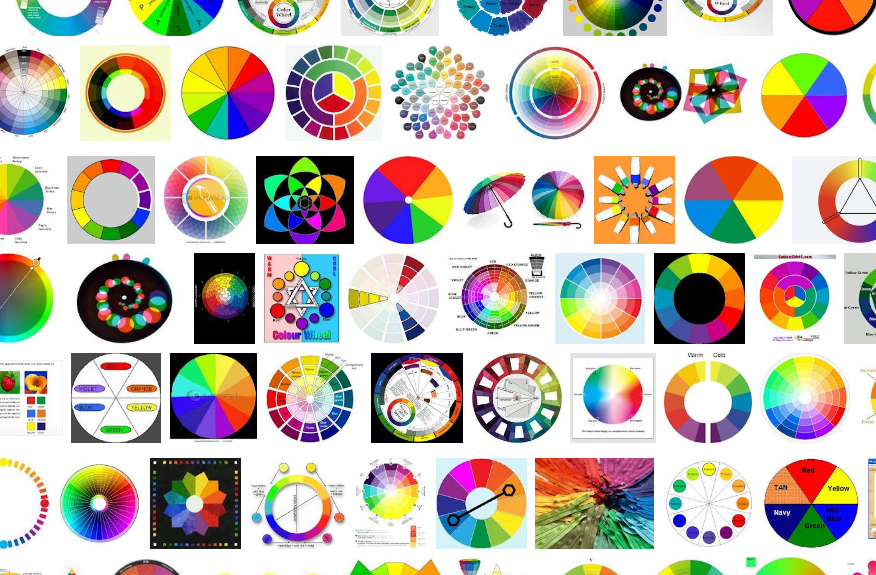
The visible spectrum is for several reasons often likened to a wheel. But in fact the end points really don't join up. It's more like an octave in that respect.
We are taught at school that we have receptors in our eyes for three colours:
In fact we have receptors for Blue and two sorts of green:

 We can still see red.
We can still see red.
But it is no wonder that red/green colour blindness is the most common
 When light strikes your eye, the response distributed over
the different sensors is used to determine which colour it is.
When light strikes your eye, the response distributed over
the different sensors is used to determine which colour it is.
So if you send a combination of colours (i.e. a chord) that produce the same sensor response, your eyes cannot tell the difference.
 A visiting alien who could see colours in the same way we
hear sounds would be astounded by our terrible lack of colour sense, since we
combine all sorts of combinations that look the same to us, but are
completely different.
A visiting alien who could see colours in the same way we
hear sounds would be astounded by our terrible lack of colour sense, since we
combine all sorts of combinations that look the same to us, but are
completely different.
We are all taught that there are three prime colours, and that any other color can be achieved by adding different proportions of the primes.
We have to treat additive and subtractive differently. Red paint looks red because it absorbs the other colours, and only the red is reflected. Green paint looks green because it absorbs all other colours (including red), and only reflects green. So mix red and green paints and the red will absorb green light and the green will absorb red light and the result will look black(ish). This is subtractive.
On the other hand shine a red light and a green light, and the two will mix, and produce what we perceive as yellow. This is additive.
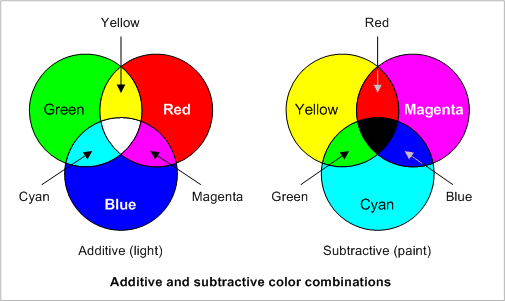
So if you are working in inks or light, you use different combinations to produce different perceived colours.
On screens the three primes used are red, green and blue
On printers: yellow, cyan and magenta.
On printers they use black as well, because a mixture of yellow, cyan and magenta produces a muddy grey colour.
On screens black is all pixels off, and r+g+b is percieved as an acceptable white.
You can see this very well in a Philips Colour Lamp
We use the awful RGB notation, such as #FC041B
This is awful for so many reasons
CSS recently introduced a somewhat better notation HSL, which is also expressed in 3 numbers:
hsl(120, 100%, 50%)
a hue (in degrees of the colour circle, with red=0, green=120, blue=240), the amount of saturation (100%=fully saturated, 0%=no colour), and the amount of light: 0% is black, 100% is white, and 50% is 'normal'. Examples.
As it happens, this is what the Philips colour lamp uses too.
Some women apparently have 4 colour sensors...
As if all this wasn't bad enough...
Once the eye has registered the scene, the brain goes to work.
The eye is not optically very good, and so all sorts of algorithms come into play to help us see better.
In particular, our brains are constantly pressing the Picasa "I feel lucky" button:
Hold your hand up
Count the number of triangles on the next screen
Drop your hand when you have counted
but count the red shapes

A and B are objectively the same colour.

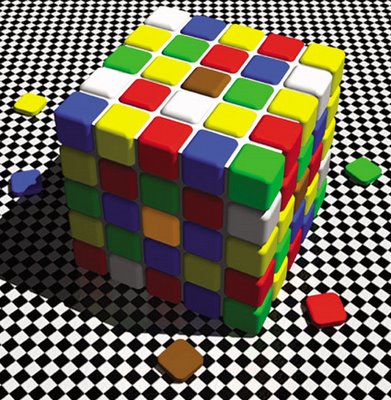
The Yellow and brown squares are objectively the same colour.

In English there are 11 basic colour names (that is, roughly speaking, words that we teach our children):
Red, orange, yellow, green, blue, purple, brown, pink, black, white, grey

So do you think that the colour orange is named after the fruit, or the fruit is so-called because of its colour?
In fact there was no colour orange in English until the introduction of the fruit in the 16th century. Until then it was just seen as a reddish-yellow.
The progression of the name was unsurprisingly gradual. After the introduction of the fruit, you find people talking of things having an "orange hue" (where "orange" still refers to the fruit), and it wasn't until around 1600 that people started using the word orange as a free-standing colour name.
Just as orange is equidistant between red and yellow, so is this greenish colour equidistant between green and turquoise.
.
.
.
.
.
.
.
.
.
.
.

Similarly, pink is a late addition, after orange. Pink is named after a flower (just as with roos in Dutch). You'll find "pink-coloured" first used in 1681, but apparently not being used free-standing until the 19th century.
It turns out that how the spectrum gets divided into colour names is largely cultural
 For instance Ao (青) is a Japanese color
that covers English blue and green: in Japan, green traffic lights are ao
shingo, blue skies are ao zora, and green apples are ao
ringo. (The image is the result of an image search for Ao).
For instance Ao (青) is a Japanese color
that covers English blue and green: in Japan, green traffic lights are ao
shingo, blue skies are ao zora, and green apples are ao
ringo. (The image is the result of an image search for Ao).
The African Himba language and the Mexican Tzeltal language are examples of other languages that do similar.
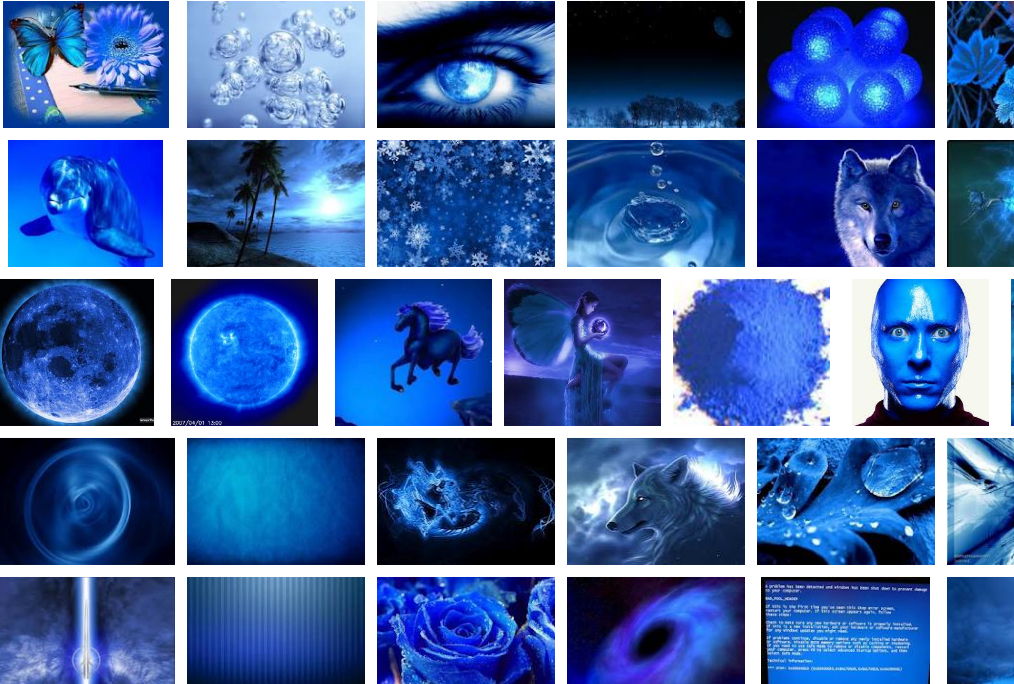 But
before you start laughing, English (and Dutch) don't have words for the basic
Russian colours синий (siniy) and голубой (goluboy), but have to do
with the one word "blue" to cover both.
But
before you start laughing, English (and Dutch) don't have words for the basic
Russian colours синий (siniy) and голубой (goluboy), but have to do
with the one word "blue" to cover both.
So if orange and pink joined so late, (and at different times), do colour names gradually get added to languages?
The answer appears to be yes, and there is even evidence that they develop in a fairly fixed order.
Dark/Light>Red>Green/Blue/Yellow>...
The Himbas cannot distinguish easily between certain blues and certain greens (they can't see that there is an odd-one-out in this image:)

But don't laugh: they can immediately tell the odd one out of these (they are all rgb(80, 186, 15) except one that is rgb(97, 192, 4)):
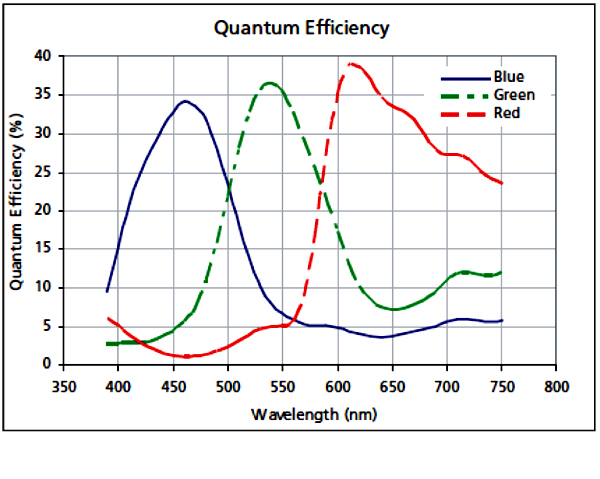
What do you think that means?
So... clothes don't need to block it


Colour is funny stuff
What seems so natural is an extraordinary combination of weird sensors, optical illusions, and the effect of culture.
red
two
yellow
four
green
six
cyan
eight
blue
ten
magenta
twelve
Colour: Social and Cultural